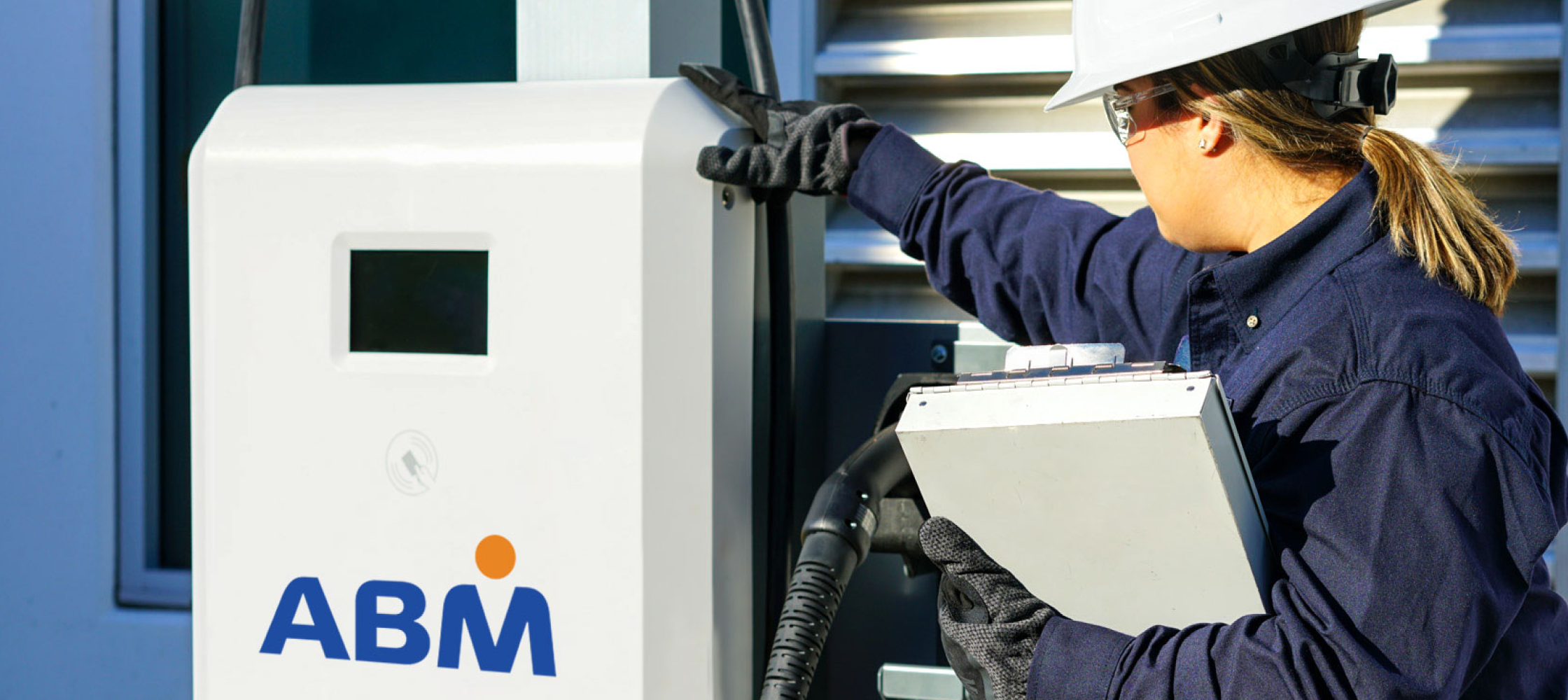The EV Evolution is Underway
ABM answers the complexities of creating EV charging infrastructure
by John Van Horn, Editor and Publisher, Parking Today
When I spoke to Justin Halstead, Vice President of eMobility and Electrical Infrastructure at ABM, and asked about a number of electrical vehicle (“EV”) charging infrastructure issues, he often started his response with “It depends,” reflecting the complexities involved with evaluating, designing, installing and maintaining an effective EV charging program, mostly having to do with jurisdiction, size and the like. “Are you dealing with the local power provider, a municipality, state or federal government? Each has different rules and requirements, and that’s just one component,” Halstead added.
For example, federally, the focus is on Level-3 DC Fast Chargers located within one mile of a freeway offramp and 50 miles apart. Much of the news and conversation at the federal level is mostly in this area, as the government pushes to create a national charging network.
Covering the costs and getting the government to chip in
A major question Halstead hears most often from clients is: “What is the procedure to get government funding for these projects?” Halstead’s response: “It depends,” mostly on the jurisdiction in which the project is located, but with other considerations as well.
“Applying for grants and incentives needs to begin at the planning stage—before you break ground,” said Halstead. He added that most of us think of ‘breaking ground’ as a ceremony where the mayor turns over a spade of earth. However, when it comes to infrastructure projects, it has to do with actually signing the contract for construction which could be months before the mayor shows up.
“Often, your project will need to be certified by the utility involved and there is a lot of coordination and alignment that needs to come together before beginning the actual visible site work for the project, which is why working with an experienced partner matters,” added Halstead.
As for what costs are covered, once again, Halstead used his two favorite words and added: “I’m not purposely trying to evade your question, but it really does depend on so many aspects of the project, which is what makes each a custom job.”
He also added, “Remember, we aren’t just talking about purchasing the actual chargers. That’s the easy part. It’s just not the same as installing a charger at home, where in most cases, the power is already in your house and an electrician can do the rest. Creating a new EV charging program in a public setting can be complex.”
“You can’t just plug it in. These chargers, depending on the size, have specific requirements, and in most cases, if you are dealing with Level-3 DC Fast Chargers, the power needs aren’t readily available in the facility and must be brought in. This means engineering, conduit, wiring and the installation of electrical service handled by the local utility—again requiring coordination and alignment of a lot of moving parts. But, this process also doesn’t need to feel overwhelming for a facility owner or operator.”
Focusing on the driver experience
Of the questions that should be considered before design and engineering begins, Halstead recommended taking a step back and starting with the driver experience. “I suggest always starting with the overall experience you want to provide and build from there. Will drivers be self-parking, or will you provide valet? Will drivers be able to leave their car parked or will they need to move after their car is charged? Will there be a fee with payment requirements? Any connectivity to other networks like building security or business loyalty programs? Some of these considerations do not need to be decided on day one, but it’s important to have a clear view of the overall experience you want to create, so the infrastructure you invest in can support that vision in the long term.”
Then there is the power load requirement.
“Let’s say we both arrive at the facility and hook up to be charged. I have a battery that is 80% full and you have one that is 10% full. The equipment may need a load management system to switch power from me to you when my car is finished charging. The power requirements to charge both vehicles at the same time can be just too great. It’s important that the switching is seamless and efficient for both energy usage and to deliver the fastest charge for customers.”
At Los Angeles International Airport (LAX), ABM led the largest single EV charging installation in the nation, with over 1,400 fast chargers in a single location. “Consider the load requirement if all those chargers are in use,” said Halstead. “Keep in mind, the airport is still having to light, cool and run many other complex systems in the facility. EV should not add to that complexity, and we designed the system so all chargers could charge simultaneously without any impact outside the parking ecosystem.”
Before you reach for the Advil, there is help available. Justin’s firm has an entire EV division with experts providing end-to-end solutions and management of the entire process, including working with the local, state and federal governments; the power company; and equipment suppliers. They aren’t alone. A number of consulting engineering firms supply these services.
The need for facility owners and operators to reach out for that expertise may be the one question Halstead answers without any caveat: “We are beyond the time of installing one or two chargers. The EV evolution is underway and building tenants, business customers and the public are going to expect facilities to have this capability. The process can be complex, and should not be one you try
to do yourself.“


